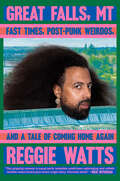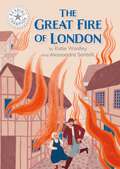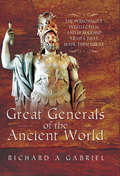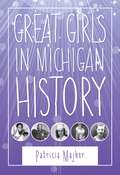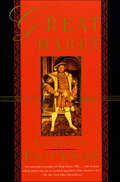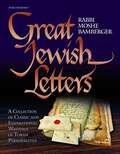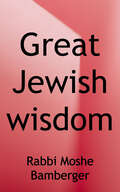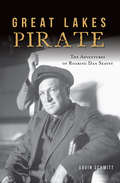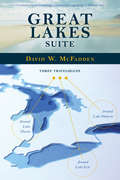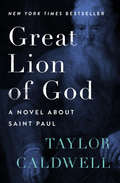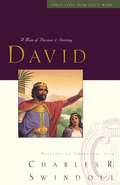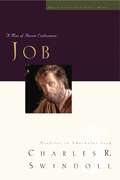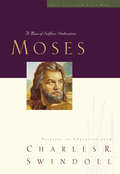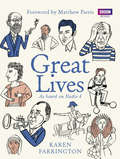- Table View
- List View
Great Falls, MT: Fast Times, Post-Punk Weirdos, and a Tale of Coming Home Again
by Reggie WattsComedian and musician Reggie Watts shares his story of growing up in Montana as a biracial oddball struggling to navigate life, girls, drugs, and his own identity in America&’s heartland—and having a blast doing it. Reggie Watts is weird. But you knew that. Anyone who&’s seen his multifaceted, entirely improvised comedy and music shows knows that. Reggie Watts is also from the town of Great Falls, MT. These two facts are not unrelated. Watts grew up in Montana in the &‘80s, half French, half American, half white, half Black, speaking a bunch of different languages and slipping between the orchestra geeks and the football jocks until he finally found a squad of fellow misfits with an affinity for trouble. It was a wide-open time and place that invited freedom and exploration—as well as car theft and the not infrequent use of recreational cough syrup. And it helped him become the uniquely strange creative voice he is today. In Great Falls, MT, Watts takes us through his story, hitting on the culture shock he experienced after moving from Europe to the heart of America, where he was called racial slurs by neighbors but wasn&’t Black enough for his father&’s extended family. Where he fought with his authoritarian dad, built a new family of antiestablishment, post-punk oddballs—and ultimately knew he had to leave. But after Watts&’s career exploded in Seattle and New York, ultimately scoring him a nightly place next to James Corden on The Late Late Show, he found himself drawn back to his hometown after the deaths of his parents. This is his love letter to the town that made him. But like love itself, it&’s messy and complicated and dirty and beautiful—and as weird and wonderful as Watts himself.
Great Fire of London, The: Independent Reading White 10 (Reading Champion #1716)
by Katie WoolleyThis story is part of Reading Champion, a series carefully linked to book bands to encourage independent reading skills, developed with Dr Sue Bodman and Glen Franklin of UCL Institute of Education (IOE) Fantastic, original stories are accompanied by engaging artwork and a reading activity. Each book has been carefully graded so that it can be matched to a child's reading ability, encouraging reading for pleasure. Perfect for 5-7 year olds or those reading book band white.
Great Generals of the Ancient World: The Personality, Intellectual and Leadership Traits That Made Them Great
by Richard A. GabrielThe military expert and author of Philip II of Macedonia presents 9 profiles of exemplary leadership from the ancient world. Of all the military commanders throughout history, only a few are remembered as great leaders of men in battle. Is there a combination of personal attributes and historical circumstances that produces great commanders? Professor Richard A. Gabriel analyses the biographies of ten great generals, all of whom lived between 1481 BC and AD 632, in order to identify the characteristics of intellect, psychology, personality, and experience that allowed them to tread the path to greatness. Some of the names included in Gabriel&’s selection, such as Moses and Muhammad, will surprise many readers—as will the historical figures Gabriel chooses to omit, including Alexander the Great and Atilla the Hun. But Gabriel is not merely interested in famous military exploits. A retired soldier and professor at the Canadian Defence College, he distils the timeless essence of military leadership through the examples of Julius Caesar, Philip II of Macedonia, Thutmose III of Egypt, and others
Great Girls in Michigan History (Great Lakes Books Series)
by Patricia MajherA deep-sea diver, a dancer, an activist, an aviator, a singer, and a soldier--Great Girls in Michigan History highlights some of the girls from Michigan's past who did amazing things before they turned twenty years old. Author Patricia Majher presents easy-to-read mini-biographies of twenty girls with ties to Michigan, representing a variety of personal backgrounds and interests, locations across the state, and historical time periods. Majher introduces little-known stories, like those of female aviator Nancy Harkness (Love), pioneer Anna Howard Shaw, escaped slave Dorothy Butler, professional baseball player Marilyn Jenkins, union leader Myra Komaroff (Wolfgang), and Native American writer Jane Johnston (Schoolcraft). She also includes figures that many readers will recognize--including First Lady Betty Bloomer (Ford), jockey Julie Krone, Motown star Diana Ross, and tennis champion Serena Williams. Majher shows that while life wasn't always easy for these girls, they were able to overcome any number of obstacles to achieve their goals. Great Girls in Michigan History includes a brief section on each girl's life after the age of twenty and a glossary of selected vocabulary words at the end of the book. With its depictions of young women who have not typically been represented in history texts, this book will be inspirational reading for upper elementary school students (ages 8 to 12) and welcomed by Michigan schools, bookstores, and public libraries.
Great Girls: Profiles of Awesome Canadian Athletes
by Laura Robinson Maija RobinsonProfiles of Canadian women athletes.
Great Harry: A Biography Of Henry Viii
by Carolly EricksonSt. Martin's Griffin is proud to reissue acclaimed biographer Carolly Erickson's lives of the Tudor monarchs.In this full-scale popular biography of Henry VIII, Carolly Erickson re-creates the extravagant life and times of one of history's most complex and fascinating men.Based on voluminous records of the period, the story of Henry's life covers his troubled youth, his triumphant early reign, and his agonizing old age.Against the lively backdrop of the Tudor world, with all its splendors and squalors, Carolly Erickson gives us an unforgettable and human portrait of Henry VIII.
Great Jewish Letters: A Collection of Classic and Inspirational Writings of Torah Personalities
by Moshe BambergerGreat Jewish Letters: A Collection of Classic and Inspirational Writings of Torah Personalities (Artscroll) (English and Hebrew Edition)
Great Jewish Wisdom
by Rabbi Moshe BambergerA compact gift volume featuring short, philosophical quotations on life and living by noted Jewish scholars and Torah greats. Each citation is accompanied by a brief biography of its author, and placed against a stunning visual, which adds a whole new dimension to the meaning of the words.
Great Lakes Pirate: The Adventures of Roaring Dan Seavey
by Gavin SchmittBest known for its many natural wonders, Lake Michigan also claims the odd and dubious honor as the home and stomping grounds of "Roaring" Dan Seavey, alleged to be the only pirate arrested on the Great Lakes. Aboard his ship, the Wanderer, Seavey's life at sea (or at lake) entangled him in all kinds of misadventures. The wanton sailor roamed to the wilds of Alaska, engaged in a brisk chase with the Coast Guard and survived a raging inferno--and those are just the stories that can be confirmed. Legends of drunken brawls and grave robbing continue to follow Roaring Dan long after his death. Author Gavin Schmitt leads readers on a journey with one of Lake Michigan's most notorious sailors.
Great Lakes Suite
by David W. McfaddenSpecially edited, updated, revised and rewritten by the author, and for the first time complete in one volume, Great Lakes Suite includes A Trip Around Lake Ontario, first published in 1988, as well as A Trip Around Lake Erie and A Trip Around Lake Huron, both of which were first published in 1980. These books have come alive in a remarkable way and have made the whole much more than merely the sum of its parts. They have become funnier, sadder, more inter-connected, more spiritual, more sure of themselves. They sparkle from beginning to end with a new depth and resonance. They represent a time that is no more, an idyllic time (so it seems now) before the differences between Canada and the U.S. became so small as to be a joke. The years since they first appeared have been kind to these books and McFadden's extensive reworking of the texts has given them a heightened sheen.
Great Lion of God: A Novel About Saint Paul
by Taylor CaldwellNew York Times Bestseller: A &“beautifully written&” and &“truly outstanding&” novel based on the life of Paul the Apostle (The Cincinnati Enquirer). Born a veritable great lion of God to a devout Jewish family, Saul of Tarsus is raised by his parents to embrace their love of humanity. Dogged by what he perceives as a lack of true faith, he embarks on a journey to save his people from sacrilege. But on the road to Damascus a vision of the resurrected Jesus changes the course of his life. Converting to Christianity, the newly christened Paul transforms from persecutor of blasphemers into apostle to the gentiles, becoming one of the supreme influences on the Catholic Church and the Western world. Great Lion of God paints a unique and very human portrait of Saint Paul, one of the most passionate, dauntless, and complex figures of early Christianity—Pharisee, lawyer, theologian, and above all, a &“man like ourselves with our own despairs, doubts, anxieties and angers and intolerances, and &‘lusts of the flesh.&’&” The central novel in author Taylor Caldwell&’s biblical trilogy, which also includes Dear and Glorious Physician and I, Judas, Great Lion of God is both &“sheer entertainment&” and a moving tribute to the majesty and power of the Christian faith (Fort Worth Star-Telegram). This ebook features an illustrated biography of Taylor Caldwell including rare images from the author&’s estate.
Great Lives: A Man Of Passion And Destiny (Great Lives Series #1)
by Charles R. SwindollDavid, unlike any Bible character before him, had the charisma to inspire a great nation. Yet in other ways he was a most ordinary man-often gripped by destructive passion, rocked by personal tragedy, and motivated by political gain. Yet, he is the one character the Bible describes as a "man after God's own heart." In this first volume of the "Great Lives" series Charles Swindoll shows how David proved his love for God many times over in an extraordinary life that left an enduring legacy of faith.
Great Lives: A Man of Heroic Endurance (Great Lives Ser.)
by Charles R. SwindollJob A Man of Colossal Faith in the Face of Overwhelming Tragedy Job, a study in pathetic tragedy . . . a hapless victim of unfair treatment. His disastrous circumstances overwhelmed him. His boil-covered body tormented him. His so-called friends belittled him. His distraught wife discouraged him. Even God seemed to desert him?letting Satan have his devilish way. And Job sat patiently by, enduring it all. Not a portrait of a hero. Or is it? Could a man with ordinary internal fortitude stay faithful as Job did? Could a wimp endure the excruciating pain, suffering, and loss that this man did? No hero? Think again. After a year of focused research into the life of Job, Charles Swindoll says, "Job appears boldly in the ancient book of the Bible that bears his name, and yet most of us have not taken the time to examine his life in depth. But a careful study of Job's life will convince us that this is another of God's amazing men with heroic character qualities worth emulating." Travel with Swindoll into the world of Job: A Man of Heroic Endurance. "Even if it was written in Scripture long ago, you can be sure it's written for us." So pay close attention to Job's life. Who knows what God will do next in your life?
Great Lives: A Man of Selfless Dedication (Great Lives Series)
by Charles R. SwindollMoses: A Man of Selfless Dedication Was he the sleek-and-trim, funloving animated man in The Prince of Egypt or the handsome, strong-hearted, superstar played by Charlton Heston in The Ten Commandments? The most likely answer is "neither." The Bible gives a much more accurate picture of the Moses God used in such remarkable ways, Charles Swindoll paints a portrait of the biblical Moses in this fascinating look into the heart and mind of Moses: A Man of Selfless Dedication. Swindoll gives us straight facts based squarely on the truth revealed in God's Word. He also fills in the fine-line details of Moses' life with emotion and feeling, because Moses, like all of us, was a human being with faults and frailties. And finally, Swindoll helps us apply the lessons of Moses' life to our own daily dilemmas. When you face your personal Red Sea test, will you be prepared? Your decision to go forward in life instead of retreating will be bolstered by your having studied the real Moses of the Bible?the Moses who tried to decline his assignment from God; the Moses who dazzled Pharaoh; the Moses who received the Ten Commandments; the Moses who was sometimes disobedient and weak; the Moses who was the greatest leader of God's people in all of history; the Moses of faith and selfless dedication to his God.
Great Lives: As heard on Radio 4
by Karen FarringtonBased on the popular Radio 4 series, Great Lives highlights some of the world's most fascinating and influential characters. Chosen by the show's guests, each biography reveals the life and times of artists, sportsmen, statesmen, authors, monarchs, actors, musicians and scientists, showing why they inspire, what they achieved and how they have influenced the world at large. Discover the intriguing lives of Clement Attlee and Henri Matisse, King Alfred and Samuel Johnson, Tommy Cooper and Robert Kennedy, Robin Day and Edith Wharton, along with many more. From the famous to the obscure, the historical to the contemporary, each biography provides an insight into the character's personality, why they were driven to achieve so much, and separates fact from fiction. With a foreword by the show's presenter, Matthew Parris, Great Lives is an ideal gift for history and biography enthusiasts, and for fans of the Radio 4 series.
Great Lives: Beacons of Hope
by Rajee RamanThese are a reflection of the lives and the spirit with which the philosophers, freedom fighters, reformers, humanitarians rendered service to mankind in India. They come alive in these pages to serve as role-models for this generation.
Great Lives: Creative Geniuses
by Anitha VasanthThese are a reflection of the lives and the single-minded determination with which the literary scholars, poets, scientists pursued their dreams and brought tremendous pride and honour to India. They serve as role-models for this generation.
Great Lives: Freedom Fighters
by Narayanan SubramanianThe lives of the Indian leaders who entered the political arena of the country during the late 18th and early 19th century have been compiled into story form for children.
Great Lives: Gandhi
by Nigel Hunter"His face is familiar to people in all parts of the world, but to the people of India, Mahatma Gandhi is part of the landscape itself. In every Indian town and village, you are likely to see his image. It could be a framed portrait in the Post Office or bank or a faded photograph displayed on the crumbling wall of a back street tea shop. It could be a brightly-colored postcard clipped to the side of a street-vendor's stall; or a full-length statue set up in the restful shade of a public park or above the hurly-burly and bustle of the crossroads. He may be pictured at his spinning wheel, absorbed in concentration, or playing with children, laughing good naturedly. Or perhaps he is drinking tea with the Viceroy. More often, he is portrayed striding purposefully forward, leading the movement for Indian independence; for freedom, peace and friendship. Millions affectionately called him Bapu, Father of the nation."
Great Lives: Leaders of People
by Anitha VasanthThe 20th Century has seen numerous great Indian leaders whose visions and aspirations have resulted in a progressive and modern thinking country. Their biographies reflect their lives and how they pursued and fulfilled their ambitions.
Great Lives: Masters of Science
by Neeti JaychanderLife stories of eminent scientists who invented different things that makes the world move forward and advance in development.
Great Lives: Messengers of God
by Rajee RamanStories on the lives of immortal people who are respected as the messengers of god by people from different religions, faiths and beliefs.
Great Lives: Moses
by Charles R. SwindollMoses: A Man of Selfless Dedication Was he the sleek-and-trim, funloving animated man in The Prince of Egypt or the handsome, strong-hearted, superstar played by Charlton Heston in The Ten Commandments?The most likely answer is "neither." The Bible gives a much more accurate picture of the Moses God used in such remarkable ways, Charles Swindoll paints a portrait of the biblical Moses in this fascinating look into the heart and mind of Moses: A Man of Selfless Dedication.Swindoll gives us straight facts based squarely on the truth revealed in God's Word. He also fills in the fine-line details of Moses' life with emotion and feeling, because Moses, like all of us, was a human being with faults and frailties. And finally, Swindoll helps us apply the lessons of Moses' life to our own daily dilemmas.When you face your personal Red Sea test, will you be prepared? Your decision to go forward in life instead of retreating will be bolstered by your having studied the real Moses of the Bible-the Moses who tried to decline his assignment from God; the Moses who dazzled Pharaoh; the Moses who received the Ten Commandments; the Moses who was sometimes disobedient and weak; the Moses who was the greatest leader of God's people in all of history; the Moses of faith and selfless dedication to his God.
Great Lives: Women of Substance
by Rajee RamanStories of the lives of great women, their backgrounds and events from childhood. Their inspirational achievements are illustrated in a simple language.
Great Lives: World Leaders
by Radhika MeghanathanGreat Lives is a biographical series that charts the lives of great men and women. Explore their backgrounds and events which showed their greatness even in childhood. Their experiences inspired them to think the way they did.
